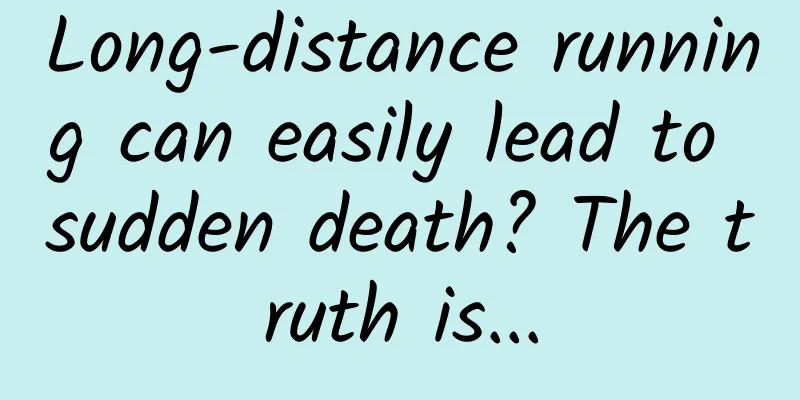Is cervical spondylotic radiculopathy caused by nerve compression? How to treat it?

|
Author: Jian Fengzeng, Chief Physician, Xuanwu Hospital, Capital Medical University Reviewer: Zhang Zhihai, Chief Physician, Guang'anmen Hospital, China Academy of Chinese Medical Sciences The cervical vertebrae are composed of seven segments. The first cervical vertebra is called the atlas, the second cervical vertebra is called the axis, and below them are the third, fourth, fifth, sixth, and seventh cervical vertebrae. Figure 1 Original copyright image, no permission to reprint The intervertebral disc connects each cervical vertebra together, and connects the cavities between each segment longitudinally to form the vertebral canal. Inside the vertebral canal runs the spinal cord and the nerve roots that emanate from the spinal cord. Cervical spondylosis is divided into cervical type cervical spondylosis, radiculopathy type cervical spondylosis, and spinal cord type cervical spondylosis according to the location of the lesion and the location of compression. Some other types, such as vertebral artery type cervical spondylosis and sympathetic cervical spondylosis, are currently very controversial. Let’s talk about cervical spondylotic radiculopathy today. 1. What is cervical spondylotic radiculopathy? Cervical spondylotic radiculopathy is a nerve root disease caused by cervical spondylosis. X-ray examination of the cervical spine shows bone hyperplasia and straightening of the cervical spine, which is called degenerative change. It is a manifestation of aging with age, just like white hair. There is no neuropathy, it is just a degenerative change, not called cervical spondylosis, so there is no need to worry too much. Once neuropathy occurs, it should be taken seriously, and it is called cervical spondylosis at this time. The first symptom of radiculopathy of cervical spondylosis is changes in the cervical spine itself, such as herniated disc, bone hyperplasia, compression of the nerve roots, and causing nerve root lesions. The most common symptom is pain. The second most common symptom is loss of sensation and sensory impairment, such as insensitivity when the skin is gently touched with a small needle tip. Figure 2 Original copyright image, no permission to reprint With the changes in lifestyle and working methods, people sit in front of computers and look at mobile phones for a long time, and the age of onset of radiculopathy is gradually getting younger. It is very common in people in their thirties. The number of people suffering from the disease is increasing, and it has become a modern disease or a mismatch disease. 2. How to treat cervical spondylotic radiculopathy? The conservative treatment of radiculopathy is very effective. Once diagnosed, conservative treatment is the first choice. About 80% of the symptoms will be relieved after 4-6 months of conservative treatment, and will gradually improve. For some patients, such as those with severe pain and a long history of illness, the relief may not be particularly ideal. Conservative treatment includes traction, especially when it is caused by a herniated disc. Traction is the first priority. You can also do physical therapy, such as infrared therapy, to relieve pain. Massage can also relieve symptoms. If symptoms do not improve after half a year or a year of conservative treatment, it is important to analyze the causes and make a comprehensive judgment, rather than rushing into surgery just because conservative treatment is not effective. Literature reports that 30% of cervical spondylosis patients may have anxiety or even depression, and psychological factors account for a large part. If conservative treatment does not relieve symptoms after 3 months, surgery is done. Surgery is not necessary, and perhaps waiting another 3 months will relieve the symptoms. For example, if a simple soft disc herniation causes cervical spondylosis, you can observe it for a while, and it may shrink or be absorbed, and the nerve compression will be reduced. Conservative treatment is more likely to improve the condition. If bone hyperplasia is more obvious, the nerve compression caused by bone hyperplasia is less likely to improve, and surgical treatment may be required. In general, surgical treatment can only be considered when there are typical symptoms, typical imaging changes, and conservative treatment for 4-6 months is ineffective. 3. What are the surgical treatments for cervical spondylotic radiculopathy? There are three main surgical methods recommended internationally for cervical spondylotic radiculopathy. The first is the most traditional one, called anterior cervical spine surgery, which involves disc removal, bone grafting, fusion and internal fixation. This is currently the most commonly used surgical method and the effect is very positive. Although discectomy, bone grafting, fusion and internal fixation is a minimally invasive surgical method, it is relatively traumatic because the entire intervertebral disc must be removed. The second surgical method is to implant an artificial disc. Traditional surgery requires the entire disc to be cut off and then fixed, which will lose the function of the disc and the mobility of the cervical vertebrae. It may also cause changes in other segments. We hope to retain the function of the disc so that the cervical vertebrae can move in different directions, so we implant an artificial disc. So far, the effect is good. The above two surgical methods both involve removing the entire intervertebral disc. In fact, only a small part of the intervertebral disc may be diseased, not the entire disc. The third surgical method is to simply treat the protruding part of the intervertebral disc. The internationally recommended surgical method is the so-called posterolateral approach, which enlarges the intervertebral foramen and removes the protruding part of the intervertebral disc. This surgical method does not require an artificial intervertebral disc or internal fixation. Judging from a large number of current literature reports, its effect is basically equivalent to internal fixation and artificial intervertebral disc implantation after discectomy. It is approached from the back of the cervical spine and needs to be completed under a surgical microscope or endoscope. It is a truly minimally invasive surgery. These three surgical methods have their own indications and cannot be chosen at will. There is another surgical method that is not used very often now, but it is also very good, extremely precise, and minimally invasive. It is called the anterolateral approach, or uncovertebral joint resection, or disc resection. This method does not require fixation and is particularly suitable for patients with severe bone hyperplasia and foraminal stenosis. This surgical method may have higher requirements for surgical skills, so the degree of acceptance is not very high. |
<<: Kidney cysts are a disease that almost all elderly people will suffer from.
>>: Why does kidney disease cause lower limb edema? What can be done to help eliminate edema?
Recommend
There are "little black shadows" flying around in your eyes? We have the answer!!!
"I feel like there are always small insects ...
What are the traditional Chinese medicine treatments for delayed menstruation?
With the quickening pace of modern urban life, th...
Pathological changes of endometrial polyps
Endometrial polyps are very harmful to women'...
172cm standard weight for girls
Most girls are still quite concerned about their ...
Can the gardenia be repotted at any time? What should I do if the leaves of the newly repotted gardenia turn yellow?
Gardenia is very common in life. Many flower love...
Drinking milk in the last month of pregnancy
Women's bodies will be relatively lacking in ...
Is hunger in early pregnancy a sign of a boy?
From ancient times to the present, people have pa...
Can I eat rice cakes during menstruation?
Female friends will experience some symptoms duri...
Why do women have body odor?
Women often have body odor due to underarm odor. ...
Let me show you a different kind of "toothache" - trigeminal neuralgia
Author: Fang Yanbo, The First Affiliated Hospital...
Ten minutes to quickly relieve dysmenorrhea
It is said that women are the most amazing creatu...
What is the best time for women to conceive?
When women want to get pregnant, they need to pay...
The best time for women to remove the IUD
Removing the IUD is mainly for women who have had...
What is the secret to making fish-flavored pork shreds? What should you pay attention to when making fish-flavored pork shreds?
Food is a lifestyle that every household likes to...
How to treat prolonged menstrual period?
Menstruation is an issue that all women are conce...









